 Color Classes
Color Classes Gallery
Gallery Pouters
Pouters Breeds
Breeds Shows
Shows Nutrition
Nutrition Links
Links
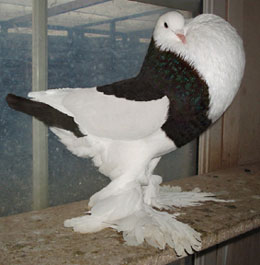
The Ghent pouter is commonly called 'pearl' of all pouters. I can tell you, he really deserves this honorable title. The Ghent pouter finds it origin in Flanders and the Netherlands, but mainly near the city of Ghent. Since 1400, we find paintings including them by many famous classic painters.
The Ghent pounter was called 'Striker' for a long time in history. This is because he really can smack hard with his wings together, especially during the flights. He's an excellent airman.
The Ghent pouter need to be massive and wide and he need to carry a big globe. He really need to look powerful and stocky.
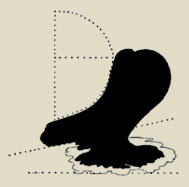
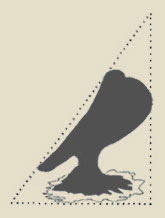
On the other hand, they have a lot in common, and lots of people believe you can crossbreed them to get improvements. The Ghent Pouter differs on character and model comparing to the Ducht and Pomeranian pouter. He typically have a stocky overall impression and carry a raising heavy breast.
If we look to the models of the three pouters, we see that we can Pomeranian pouter fits in a upward rectangle, the Dutch cropper fits in a decumbent rectangle and the Ghent fits in a square while his back a circle.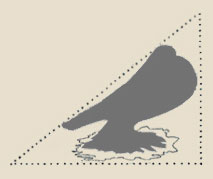
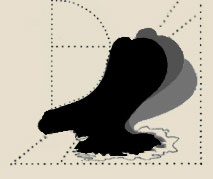
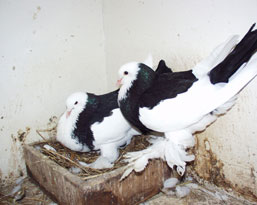
Ghent croppers are good parents.
Beside Belgium, the Ghent Pouter is loved in many countries like Holland, Germany and France where he gets much attention because of his beauty. He's also loved because of his likable appearance and energetic character.
He's a very friendly cropper and can accommodate easy everywhere. A Ghent pouter can't sit still. He's cheerful and good tempered.
In the dovecote, you can expect much uproar and quarrel. They are all prepared to breed all season long. Spring, summer, fall or winter, he don't care, as long as they are not seperated you can expect eggs.
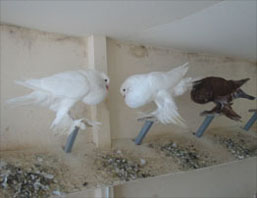
On good weather conditions, you'll see a Ghent never sit still (especially in spring and summer). Only at night, he take a couple of hours to sleep. They really have an active live.
If they can fly away, the hens will search for small rough granules. Ghents enjoy sitting on the ground.
The cocks bill and coo all the time. As long as they can get attention, they're satisfied. They will hunt for hens all the time. They will attack any mating couple.
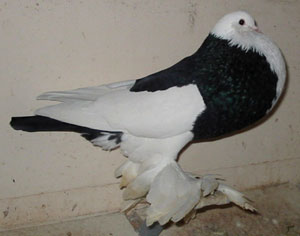
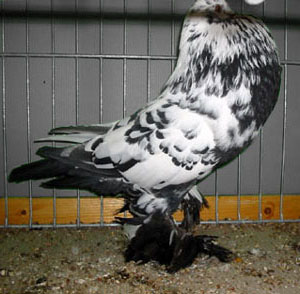
Ghent pouters exist in five different color classes. We have self ins (unicolor), Dominican (gansel marked), pied (slobber, heart sign on the crop), tigered and splashed and tail marked (verhemelstaart in Dutch).
Dominican is the most popular class. He's also called 'preacherman'. This color class is unique for Ghent pouters only.
The dominicans, pieds and self ins are most numerously. New breeders usually start with one of these color classes. The average quality is much higher then with other color classes. You'll recieve also much faster prices on shows with them.
The tail marked, tigered and splashed Ghents are very rare. They are usually too small and too little. They have also insufficient globes. Because of this, they keep impopular. This is very regrettable and sad, because this way they never become high quality.
People prefer also to buy common subjects instead of breeding rare pigeons. But still, now and then, we find some birds of high quality in the rare color classes.
Because they're infrequent, some color classes are almost extinct. For example, yellow or grey self in don't exist anymore, nor some tail marked colors.
Breeders that take time to put all their efforts in breeding these rare color classes really deserve fame. They are unlikely as rare as their birds. But thanks to them, we can enjoy all the beauty of their special color classes.
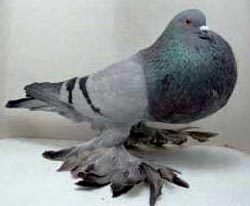
The Ghent pouter get commonly unrightful compared and confused with the Dutch pouter. Both breeds are heavy and powerfull builded and have heavy foot feathering. But these are the only communal things. In model and character, they disagree completly. The Dutch pouter is an inactive slow pouter that lives calm, while the Ghent is very active and energetic.
But still, there are breeders that crossbreed Ghent and Dutch pouters. They usually do it because some Ghents are too small or their foot feathering is too small. Other reasons are the color class or globe. When you crossbreed, it will require several generations before you recieve birds with optimal model and type.
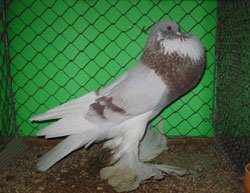
Also the Pomeranian pouter is too long to crossbreed with Ghent pouters.
After more then 20 years of breeding, I noticed several ways of breeding paterns. Every breeder will use his own one to achieve his goals. This is good because else this hobby would be very boring.
But one things has all breeders in common. They all try to breed the perfect bird.
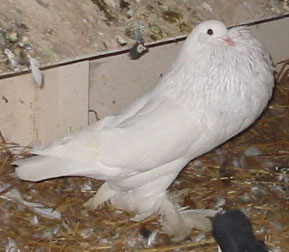

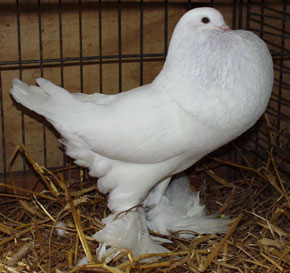
The golden rule in breeding Ghent pouters is: 'Never forget that a Ghent pouter need to have a very big globe. The bird is called pouter for a reason. If he don't blow, why should we call him pouter anyway? In the Standard, it's written down that the globe need to be very big. Many wellknown breeders and judges told me that I should put much attention on this gold rule.
There are breeders that think that a good Ghent pouter need to be only heavy, stocky and need to have good color marking. But they're wrong. That's very regrettably. As pouterbreeder, we all should know better. Also these kind of breeders are responsible that good blowing Ghent pouters are becoming rare.
You'll find now sporadic in Belgium, Holland, Germany or France excellent subjects with a perfect globe. It's true that the overall impression of a Ghent pouter need to be powerful, but a big globe only can increase this impression a lot.
Any breeder who still think a Ghent pouter don't need to blow much, should better prefer other breeds like the American king, Montauben, etc...
But birds that are excellent in overal impression, type and model without a big globe don't always need to be removed from the dovecote. But always try to match them with a good blowing partner. A good blowing hen matched with a stocky powerful cock is a good choice. On the other hand, a good blowing cock match with a less blowing hen give less results.
The disadvantage of a good blowing pouter is that he usually have problems to stay in the perfect horizontal position. Luckily the Standard tolerate it.
Only a restfull bird need to carry the back in horizontal position. This is in action almost impossible.Luckly the judges know this problem and they will still reward good blowing pouters.
Pouters with a small globe will never recieve a high score on a show, you can really see that judges always take notice of it. The judges know that breeding a perfect blowing pouter is much more difficult. It requires much more skill. Judges also know that the good blowing pouters are becoming rare.
The real champions are those that can hold their back in horizontal position, while blowing heavy and still being stable. A skilled breeder always try to breed birds like this.
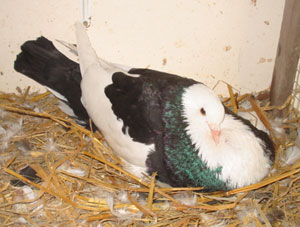

Another disadvantage of a good blowing bird is that these birds are not that good breeding-animals. They have commonly a haning-crop. They have much problems with feeding the young animals. You're almost obligated to use foster parrents.
Tip: Try to feed small grains and corns. This will simplify the feeding of the young birds for pouters with a good globe.
It's also a fact that heavy blowing Ghent pouters usualy don't live as long as others. This results in the fact that they stay rare.
You also have breeders that think that our massive and powerful Ghent pouter is a color pigeon. They take extremly much attention to color and markings. I advice them to breed for example a Saxon color pigeon.
They always select their birds by the markings. Dominicans with no 'fish'-tail are ignored.
Selecting on color and markings results in neglecting model and type. Sooner or later, you'll end with birds that are too small or to little, or birds with small globe.
Conclussion: A good Ghent pouter needs to have a very powerfull overall impression. When he's restful, he need to carry his back in a horizontal position. He has very much foot feathering and a very big globe.